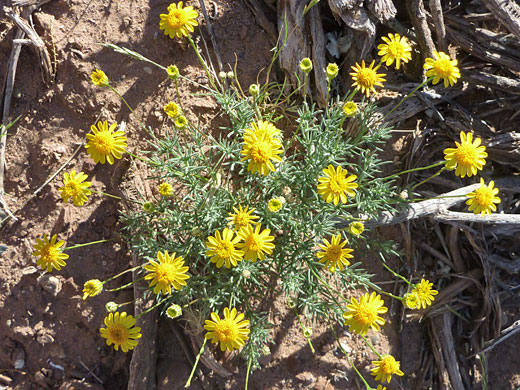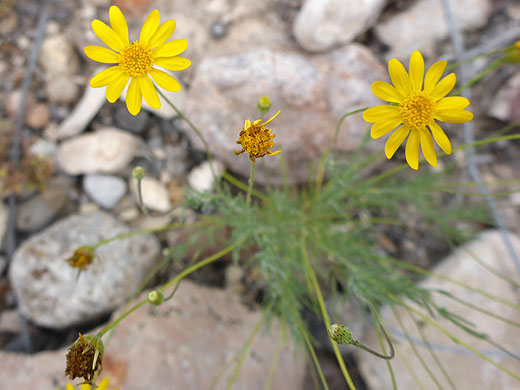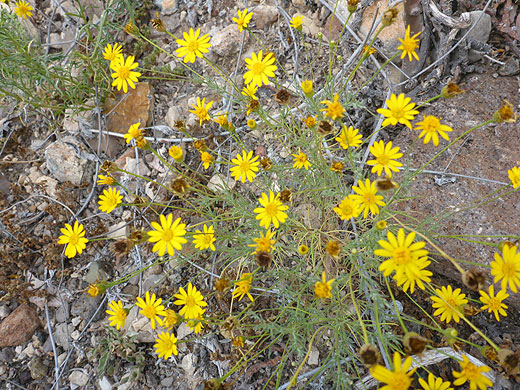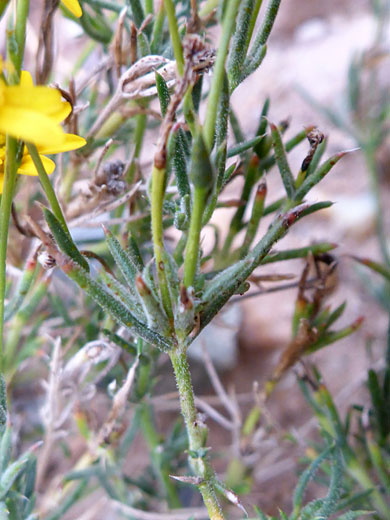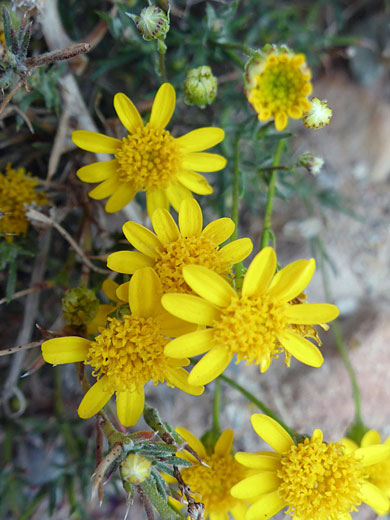Thymophylla Pentachaeta, Five-Needled Prickly Leaf
Plants > Wildflowers > Asteraceae > Thymophylla Pentachaeta

Yellow flowerhead, with 13 ray petals - thymophylla pentachaeta var belenidium, near Lees Ferry, Arizona
Common names:
Five-needled prickly leaf, dogweed, golden dyssodia
Family:
Scientific name:
Thymophylla pentachaeta
Synonym:
Thymophylla belenidium
Main flower color:
Range:
Southeast California and south Nevada, eastwards to west Texas
Height:
Between 4 and 8 inches
Habitat:
Dry, open hillsides and plains, up to 6,000 feet
Leaves:
Up to one inch long, pinnately divided into stiff, linear lobes
Season:
March to October
The common name of thymophylla pentachaeta, five-needled prickly leaf, refers to the leaves, which grow at closely spaced intervals (mostly with an opposite arrangement), at the base and along the stems; they are divided into about five (ranging from 3 to 11) narrow, linear, needle-like lobes. Stems are up to 4 inches tall, and from the top extends a leafless stalk of about the same length, topped by a single flowerhead, half an inch in diameter. Stems and leaves are greyish-green in color.
Flowerheads have 12 to 21 phyllaries, in two rows; those in the lower row (3 to 5) are quite short, triangular in shape, while the remainder (12 to 17) are over twice as long (a quarter of an inch), fused for more than half their length, and have a few orange-brown glands towards their tips. Ray florets usually number between 12 and 21, disc florets between 50 and 80.
There are four varieties (belenidium, hartwegii, pentachaeta, puberula), differing in the shape of the involucre, the number of disc florets, the margins of the phyllaries and the amount of hair covering.
Flowerheads have 12 to 21 phyllaries, in two rows; those in the lower row (3 to 5) are quite short, triangular in shape, while the remainder (12 to 17) are over twice as long (a quarter of an inch), fused for more than half their length, and have a few orange-brown glands towards their tips. Ray florets usually number between 12 and 21, disc florets between 50 and 80.
There are four varieties (belenidium, hartwegii, pentachaeta, puberula), differing in the shape of the involucre, the number of disc florets, the margins of the phyllaries and the amount of hair covering.
All Contents © Copyright The American Southwest | Comments and Questions | Contribute | Site Map


